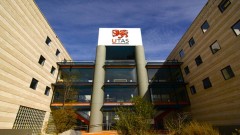- Speedy Peedy Towing Launches New Website & SEO Strategy
- Radisson Hotel Group Announces the Opening of Park Inn by Radisson Vellore
- Neerja School of Aviation Launches IATA-Accredited Airline Cabin Crew Training Program
- CM Mohan Yadav and Top Ministers Discuss Madhya Pradesh’s Growth at News18's Biggest Summit
- Breaking Free: Overcoming Tax Debt and Starting Fresh
- Confianz Global Inc. Announces Cutting-Edge Odoo Module Development Services
- Honda Presents World Premiere of Honda 0 Saloon and Honda 0 SUV Prototypes at CES 2025
- Wind Fan Introduces Innovative HVLS Fans Redefining Airflow Solutions
- RX Japan Set to Dazzle with IJT 2025: Kicking Off a Trio of Jewellery Trade Shows
- MakeMyTrip Introduces Industry-First Part Payment Option for International Flights
- RPost and eDist Team Up to Deliver Advanced E-Signature and E-Security Solutions
- PettureX App Breaks New Ground with Multi-Species Pet Recognition AI
- Continental Presents Customizable Emotional Cockpit with E Ink Prism Display at CES 2025
- Jal Shakti Minister C.R. Patil holds review meetings of Karnataka and Haryana
- AAFT School of Hospitality and Tourism Showcases Venezuelan Cuisines at the 17th Global Film Festival Noida
 Mail to a Friend Mail to a Friend |
|
     |
Transplanting instead of felling can salvage Delhi’s green cover
? NBCC felled 1,100 trees for its latest development projects that could have reduced annual CO2 emissions by 11,000 kilograms
New Delhi: Back in 2015, Delhi was considered one of the greenest metropolises in the country with municipal records reporting a 20% forest cover for the national capital. Though this number still fell far short of the national forest cover policy requirement of 33%, it is the regressive manner in which a state-run body like the NBCC, had quietly sanctioned orders for felling of trees over the length of its new development projects, that is a cause for current concern.
According to reports, plans for doubling residential units in areas like Sarojini Nagar, Netaji Nagar, Mohammedpur, Kasturba Nagar, Sriniwaspuri and Tyagaraj Nagar apart from repair and the creation of a brand new trade center were sanctioned by the Lieutenant Governor?s office. So far, 1,100 trees have been felled but none transplanted. Assuming that a single tree absorbs 10 kilograms of CO2 a year, the city could have reduced its annual emission by at least 11,000 kilograms. At present annual emission levels of 69.4 million tones, which is the combined emission capacity of Bengaluru, Chennai and Hyderabad put together, Delhi has the worst carbon footprint rate in the country.
Forest and Rural development experts have long maintained that tree destruction is a disastrous process whose damaging effects are irreversible. Explaining why trees are vital to a city?s respiration, Dr PR Sodani, President of IIHMR University, Jaipur said, ?Trees are vital to protect living beings from the oppressive heat of summer. They help retain water vapor in the atmosphere and prevent waste water accumulation in residential neighborhoods. This fact is also associated with the presence of concrete in place of soils around major roads and landmarks in the capital. Bare ground helps absorb water better and prevents water logging during the torrential monsoons. Trees are known to hold off heat during the day and preserve it at night. This prevents violent swings in local temperatures that could propel the rise of infectious diseases in rainy weather?.
For this reason, each tree uprooted should be accompanied by another transplanted preferably within sight of the earlier one so as not to disturb local water and carbon cycles. IIHMR, Jaipur recently saved six trees from being felled for construction on its campus by transplanting them all over the premises at a cost of Rs 18000 per tree. ?It takes months or years for a native species of tree to grow and regain its youthful functions of serving the recycling process of carbon and water vapor in the air we breathe. It is much better to move the trees whole, to a different location to preserve their rate of carbon absorption and mitigate both long term and short term effects of climate change. More trees mean greater fresh air for a city?s inhabitants. But this process should be accompanied by an appropriate reduction in the number of motorized vehicles on the city?s roads?, says Dr SD Gupta, Chairman, IIHMR University, Jaipur.
Municipal bodies can follow similar practices and enjoy economies of scale by adopting transplantation practices instead of destroying the few pockets of urban green that survive today and function as the city?s lungs in an increasingly precarious environmental situation.
Loss of habitat for native flora and fauna is a profound impact of deforestation with the potential to change delicate ecological equilibriums. Meanwhile, in Gujarat, a proposed bullet train line connecting Mumbai and Ahmedabad is expected uproot at least 80,487 trees in the government?s quest for modernization and rapid business transport corridors. Local farmers stand to be affected by consequent loss in soil fertility and its water retention abilities. Soil productivity is another externality that is produced as a result of tree felling whereas transplantation will serve to transfer local centers of retention while keeping the nature of farmland unchanged.
Company :-Teamwork Communication Group
User :- Pallavi Roy
Email :-roypallavi@teamworkpublicrelations.com











